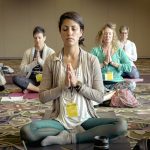Falls can have devastating consequences for seniors living independently. Tailored exercise plans offer a proactive approach to enhancing strength and balance, significantly reducing fall risks. Instead of a one-size-fits-all regimen, personalized workouts focus on individual abilities and needs. This approach not only boosts physical stability but also fosters confidence, enabling seniors to maintain their independence. Discover how targeted exercises can transform daily living for older adults, keeping them safe and active.
Understanding the Importance of Stability for Seniors
Stability is a crucial factor for seniors, as it significantly influences their overall health and well-being. As individuals age, they often face increased fall risks due to factors such as muscle weakness, balance issues, and medication side effects. These falls can lead to severe injuries, impacting a senior’s independence and quality of life.
In the same genre : Can Mindfulness Meditation Reduce the Incidence of Burnout in ICU Nurses?
The consequences of falls extend beyond physical injuries. They can also cause psychological effects, such as a fear of falling, which may lead to reduced activity levels and social isolation. This fear can further exacerbate stability issues, creating a cycle that increases the likelihood of future falls.
To mitigate these risks, enhancing stability through targeted exercise is essential. Exercises focusing on balance, strength, and flexibility can significantly reduce the risk of falls. Activities such as tai chi, yoga, or simple balance exercises can be incorporated into daily routines to improve stability and confidence.
Have you seen this : Can Probiotics Alleviate Symptoms of IBS in Women Aged 50-60?
In addition to physical benefits, engaging in regular exercise can also boost mental health, providing seniors with a sense of accomplishment and improved mood. By prioritising stability, seniors can maintain their independence and enjoy a higher quality of life, reducing the overall impact of falls on their well-being.
Custom Exercise Plans: Tailoring for Individual Needs
Creating customized exercise plans is essential in addressing the unique needs of each senior. Such plans take into account individual capabilities and limitations, ensuring exercises are both effective and safe. A tailored approach begins with a thorough assessment of a senior’s current physical condition, identifying specific areas that require attention, such as balance, strength, or flexibility.
Healthcare professionals play a crucial role in developing these personalized exercise plans. They conduct comprehensive evaluations to understand the senior’s health status, medical history, and any existing conditions that may affect their ability to perform certain exercises. This ensures that the plan is not only effective but also minimizes the risk of injury.
Key components of a tailored exercise plan include:
- Balance exercises to improve stability and reduce fall risk.
- Strength training to enhance muscle function and support joint health.
- Flexibility exercises to maintain or improve range of motion.
By focusing on these areas, customized exercise plans help seniors maintain their independence and improve overall quality of life. The involvement of healthcare professionals ensures that these plans are adaptable, allowing for modifications as the senior’s capabilities evolve. This personalized approach empowers seniors to engage in fitness activities with confidence and safety.
Key Benefits of Tailored Exercise Plans
Tailored exercise plans offer significant health improvements for seniors, enhancing both physical and psychological well-being. By focusing on individual needs, these plans improve strength, balance, and coordination, which are crucial for maintaining senior independence.
Physical Benefits
Customised exercise routines target specific areas, leading to better muscle strength and improved balance. These enhancements help reduce fall risks, allowing seniors to move with greater confidence and stability.
Psychological Benefits
Beyond physical advantages, tailored exercise plans also boost mental health. Engaging in regular activity fosters a sense of accomplishment and enhances mood, contributing to increased self-confidence. This psychological uplift is essential for seniors, as it encourages them to remain active and engaged.
Social Benefits
Participating in group exercises or community classes can provide valuable social interactions. By encouraging community engagement, seniors can build relationships and combat feelings of isolation. This social aspect not only enriches their lives but also provides motivation to adhere to their exercise routines.
In summary, tailored exercise plans are instrumental in promoting overall well-being for seniors. By addressing individual needs, these plans empower seniors to maintain independence and enjoy a healthier, more fulfilling life.
Effective Exercises to Enhance Balance and Strength
Engaging in senior-friendly workouts is vital for maintaining balance and strength. These exercises are designed to be safe and effective for older adults, focusing on improving physical capabilities without causing injury.
Balance-Enhancing Activities
Incorporating balance exercises into daily routines can significantly reduce fall risks. Activities such as tai chi and standing on one leg are excellent for enhancing balance. These exercises require minimal equipment and can be performed at home. By regularly practising these activities, seniors can improve their stability and confidence.
Strength-Building Exercises
Strength training is crucial for maintaining muscle function and supporting joint health. Simple exercises like chair squats and resistance band workouts help build muscle strength without straining the body. These exercises can be adjusted to suit individual capabilities, ensuring they are both effective and safe for seniors.
Flexibility and Coordination Drills
Improving flexibility and coordination is essential for a well-rounded fitness routine. Stretching exercises like yoga and gentle Pilates can enhance range of motion and coordination. These drills promote muscle elasticity and joint flexibility, contributing to overall physical health. By incorporating these activities, seniors can enjoy a more active and independent lifestyle.
Evidence-Based Strategies Supporting Customized Exercise Plans
Implementing evidence-based practices is essential for creating effective exercise plans for seniors, particularly in the context of fall prevention. Research studies consistently highlight the benefits of tailored exercise routines in reducing fall risks among older adults. These studies provide a solid foundation for developing personalized plans that address specific needs.
Health organizations, including the World Health Organization and the Centers for Disease Control and Prevention, offer guidelines emphasizing the importance of regular physical activity for seniors. They recommend exercises that enhance balance, strength, and flexibility to mitigate fall risks. These guidelines serve as a critical resource for healthcare professionals when designing customized exercise plans.
Case studies further demonstrate the effectiveness of these strategies. For instance, a study involving a group of seniors participating in a 12-week tailored exercise program reported a significant reduction in falls and improved overall stability. Participants also experienced enhanced confidence in their physical abilities, contributing to a more active lifestyle.
By leveraging evidence-based strategies, healthcare providers can develop exercise plans that not only prevent falls but also promote overall wellness. This approach ensures that seniors receive the most effective and safe exercise interventions, tailored to their unique needs and capabilities.
Expert Insights and Recommendations
Engaging with senior health professionals provides valuable insights into crafting effective exercise plans for seniors. Expert advice from geriatricians and physiotherapists highlights the importance of personalized fitness strategies. They recommend that seniors engage in physical activity at least three to four times a week, with each session lasting about 30 minutes. This frequency helps maintain physical health without overwhelming the individual.
Monitoring progress is crucial. Regular assessments by health professionals ensure that exercise plans remain effective and safe. Adjustments may be necessary to accommodate changes in a senior’s health status or capabilities. Fitness recommendations often include a balanced mix of strength, balance, and flexibility exercises to address the comprehensive needs of older adults.
Healthcare experts emphasize the importance of adapting exercise plans over time. As seniors progress, they may require more challenging routines to continue benefiting from their workouts. This adaptability not only enhances physical health but also boosts confidence and motivation. By following these expert insights, seniors can enjoy a tailored approach to fitness that supports their overall well-being and independence.
Tips for Implementing Exercise Plans
Implementing effective exercise routines for seniors requires thoughtful planning and consideration. Creating a safe and motivating environment is paramount. Ensure the exercise space is free from hazards and well-lit to prevent accidents. Use supportive equipment like mats and sturdy chairs to enhance safety and comfort during workouts.
Incorporating social elements can significantly boost senior engagement. Group classes or exercise buddies provide companionship and encouragement, making the activity more enjoyable. Social interaction not only motivates seniors to participate regularly but also fosters a sense of community and belonging.
Utilising tools and technology can further support exercise adherence. Wearable fitness trackers help monitor progress, offering real-time feedback and motivation. Simple apps can guide seniors through routines, ensuring they perform exercises correctly and safely. These technologies can be tailored to individual needs, making them accessible and user-friendly.
By focusing on these implementation strategies, seniors can adopt exercise plans that are not only effective but also enjoyable and sustainable. Encouraging a supportive environment, leveraging social connections, and integrating technology can make a significant difference in maintaining an active lifestyle. This approach ensures that seniors remain engaged, motivated, and committed to their fitness journey.
Testimonials and Success Stories
Senior Success Stories offer inspiring insights into the transformative power of tailored exercise plans. These real-life experiences highlight how personalised routines have positively impacted seniors’ lives.
One notable testimonial comes from Mary, a 75-year-old who struggled with mobility issues. After joining a community exercise program, she experienced remarkable improvements in her balance and strength. Mary shares, “I can now walk longer distances without fear of falling. The exercises have given me a new lease on life.”
Before-and-after comparisons further illustrate these benefits. For instance, John, an 80-year-old participant, initially required a cane for support. After months of dedicated exercise, he now enjoys daily walks unaided. His story underscores the effectiveness of these programs in enhancing independence.
Community programs play a pivotal role in these success stories. Initiatives like the “Active Seniors Club” provide structured environments where seniors can thrive. These programs not only improve physical health but also foster social connections, creating a supportive network.
Such testimonials and success stories exemplify the profound impact of customised exercise plans. They serve as powerful reminders of the potential for improved quality of life and renewed confidence among seniors through dedicated and personalised fitness strategies.
Resources for Developing Tailored Exercise Plans
Accessing the right exercise resources is crucial for seniors looking to engage in effective fitness routines. Securing professional guidance is a key step; qualified professionals, such as physiotherapists or geriatricians, can assess individual needs and craft personalized plans. Their expertise ensures that exercises are both safe and effective, addressing specific physical challenges.
For those seeking additional support, senior programs offer structured environments to promote fitness. Many communities provide local programs tailored to older adults, focusing on balance, strength, and flexibility. These programs not only offer guided exercise sessions but also foster social connections, enhancing motivation and engagement.
Online platforms serve as valuable exercise resources, offering a wealth of information and instructional videos. Websites dedicated to senior fitness provide easy access to routines that can be followed at home, catering to varying levels of ability. These resources are particularly beneficial for those who prefer the convenience of exercising in their own space.
To deepen understanding, recommended books and materials provide comprehensive insights into senior fitness. Titles focusing on exercises for older adults offer guidance on creating safe and effective routines, empowering seniors to take charge of their health. By leveraging these resources, seniors can confidently pursue tailored exercise plans.











